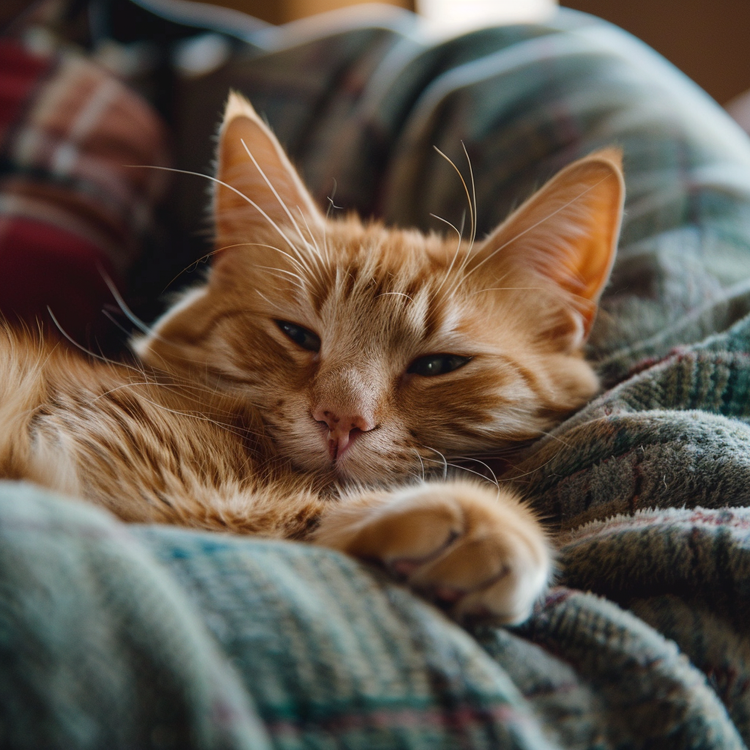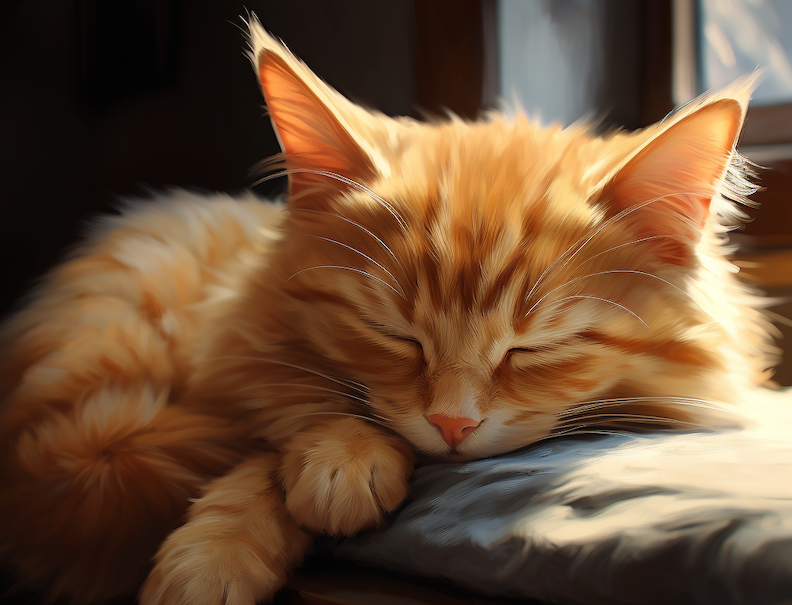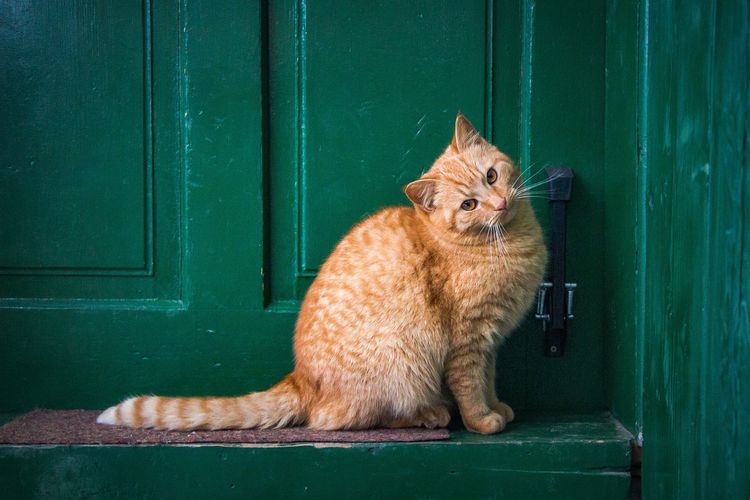The Science Behind a Cat's Purring: What Does It Mean?

Cats have long fascinated humans with their enigmatic behaviors, and one of the most intriguing and soothing sounds they produce is their purring. This gentle rumbling has captivated cat lovers for centuries, leaving us wondering about its purpose and significance. In this blog post, we will delve into the science behind a cat's purring and explore what it truly means.
1. The Mechanics of Purring:
Purring is a complex phenomenon that involves a combination of physical and neurological processes. Cats have a specialized structure in their larynx, known as the false vocal cords, which are responsible for producing the purring sound. As a cat breathes in and out, the passage of air causes the vocal cords to vibrate, creating the characteristic rumbling sound. Additionally, the laryngeal muscles and the diaphragm play a role in controlling the intensity and frequency of the purr. Understanding these intricate processes sheds light on the science behind the mesmerizing purr.
2. The Different Types of Purrs:
Not all purrs are created equal. Cats can produce various types of purring sounds, each potentially conveying a different message. For example, a soft and content purr is often associated with relaxation and pleasure, indicating that the cat is feeling comfortable and secure. On the other hand, a loud and demanding purr can signify hunger, attention-seeking, or even distress. By deciphering these distinctions in purring, we can gain insight into the emotional states and intentions behind a cat's purring, allowing us to better understand and respond to our feline companions.
3. Health Benefits of Purring:
The soothing sound of a cat's purr has been known to provide not only comfort to humans but also potential health benefits. Research suggests that the vibrations produced during purring may have a healing effect on both cats and humans. The low-frequency vibrations of the purr have been found to promote the healing of bones, reduce pain and inflammation, lower blood pressure, and even aid in the recovery of injured tissues. Furthermore, the act of petting a purring cat has been shown to reduce stress and anxiety in humans. Discover how the science behind a cat's purring extends beyond the feline realm and has a positive impact on human well-being.
4. Communication and Social Functions:
Purring serves as a form of communication between cats and their human companions, as well as among cats themselves. While cats are known for their diverse range of vocalizations, purring holds a special place in their social interactions. Cats often purr to communicate contentment and relaxation, signaling to their human caregivers that they are comfortable and happy. Additionally, mother cats purr to communicate with and soothe their kittens. Purring can also serve as a social bonding mechanism between cats, facilitating social cohesion and reducing tension within a group. By examining these communication aspects, we can better understand the intricate relationship between cats and their purring.
5. Unraveling the Mysteries:
Despite decades of research, some aspects of purring remain shrouded in mystery. For example, scientists have yet to fully understand why cats purr when in distress or pain, as it seems contradictory to the typically positive associations with purring. Furthermore, the exact neurological mechanisms behind purring are still being explored, and researchers are working to uncover the specific regions of the brain involved in producing and regulating the purring behavior. Through ongoing scientific investigations, we can hope to unravel these mysteries and shed further light on the multifaceted nature of purring.
The science behind a cat's purring is a captivating field of study that continues to intrigue researchers and cat lovers alike. By unraveling the mechanics, variations, health benefits, communication functions and unanswered questions related to purring, we gain a deeper appreciation for the profound connection between cats and humans. The mechanics of purring reveal the intricate processes that enable cats to produce this unique sound, showcasing the remarkable adaptability of their vocal apparatus. Understanding the different types of purrs helps us interpret the emotional states and intentions behind a cat's purring, enabling us to respond effectively to their needs and desires.
Exploring the health benefits of purring opens up exciting possibilities for therapeutic applications. The vibrations generated by purring have been found to have positive effects on bone density, suggesting potential benefits for individuals with osteoporosis or healing fractures. The calming influence of a purring cat can also be harnessed to alleviate stress and anxiety in humans, making them valuable companions in various therapeutic settings. By recognizing the healing potential of purring, we can further appreciate the unique bond we share with our feline friends.
Purring goes beyond simple vocalization; it is a form of communication deeply embedded in a cat's social behavior. When a cat purrs, it conveys contentment and security, serving as a signal of trust and affection towards their human companions. Similarly, purring is a means of communication among cats, facilitating social bonding and minimizing conflicts within a group. Understanding the social functions of purring allows us to foster stronger connections with our feline companions and better comprehend their social dynamics with other cats.
Yet, the mysteries surrounding purring persist. While purring is typically associated with positive emotions, cats also purr in distress or pain, which can be puzzling. It is speculated that purring may serve as a self-soothing mechanism during stressful situations, providing cats with a sense of comfort and calm. Additionally, the precise neural mechanisms responsible for initiating and controlling purring are still being unraveled. Scientists are actively exploring the brain regions involved and the intricate interplay between neurological processes and emotional states during purring.
In conclusion, the science behind a cat's purring reveals a fascinating world of vocalization, communication, and potential health benefits. The mechanics of purring showcase the complex interplay of vocal cords, laryngeal muscles, and diaphragm, enabling cats to produce their soothing rumble. The different types of purrs convey varying messages, allowing us to better understand a cat's emotional state. Purring holds potential therapeutic benefits for both cats and humans, promoting healing and reducing stress. It serves as a means of communication, strengthening the bond between cats and their human companions, as well as facilitating social cohesion among cats. While some mysteries surrounding purring remain, ongoing research continues to shed light on this captivating behavior, deepening our appreciation for the enchanting world of cats. So, the next time you hear your feline friend's gentle purr, remember that it is not just a sound, but a profound expression of connection and well-being.
Why do cats purr?
Cats purr for various reasons. While purring is commonly associated with contentment and relaxation, cats may also purr when seeking attention, feeling anxious or in pain, or even during moments of distress. Purring can serve as a self-soothing mechanism and a form of communication, expressing a range of emotions and needs.
Can all cats purr?
Most domestic cats are capable of purring, but interestingly, not all feline species can purr. Large cats like lions, tigers, and leopards cannot produce the same purring sound as domestic cats. Instead, they can roar. Purring is a unique characteristic found in smaller felines.
Do cats purr only when they are happy?
No, cats can purr for various reasons, not solely when they are happy. While contentment is a common association with purring, cats may also purr to communicate their needs, seek attention, alleviate stress, or even when they are in pain. It's important to observe the accompanying body language and context to understand the true meaning behind a cat's purring.
Can the vibrations from a cat's purring have healing effects on humans?
There is ongoing research suggesting that the vibrations produced by a cat's purring may have potential healing effects on humans. The low-frequency vibrations of purring have been associated with the promotion of bone density, reduced pain and inflammation, lower blood pressure, and improved healing of tissues. However, more scientific studies are needed to fully understand the extent of these benefits.
Are there any medical conditions where cats are unable to purr?
Generally, cats have the ability to purr unless there is an underlying medical condition that affects their vocalization or respiratory system. In rare cases, certain health issues such as laryngeal paralysis or structural abnormalities in the larynx may hinder a cat's ability to purr. If you have concerns about your cat's inability to purr, it's best to consult with a veterinarian for a proper diagnosis and guidance.


